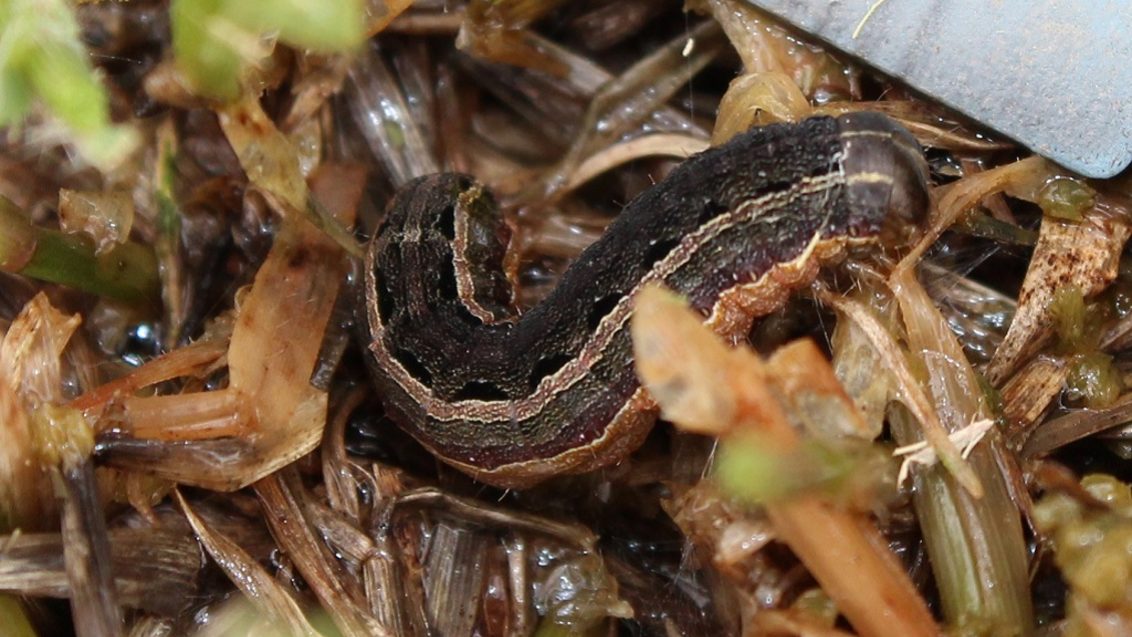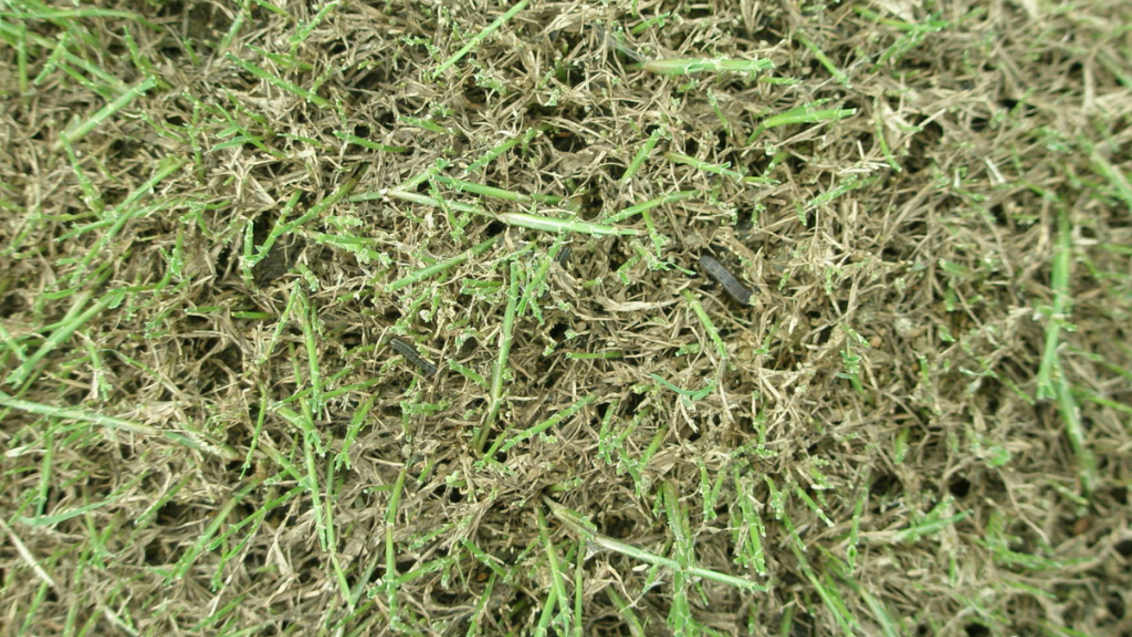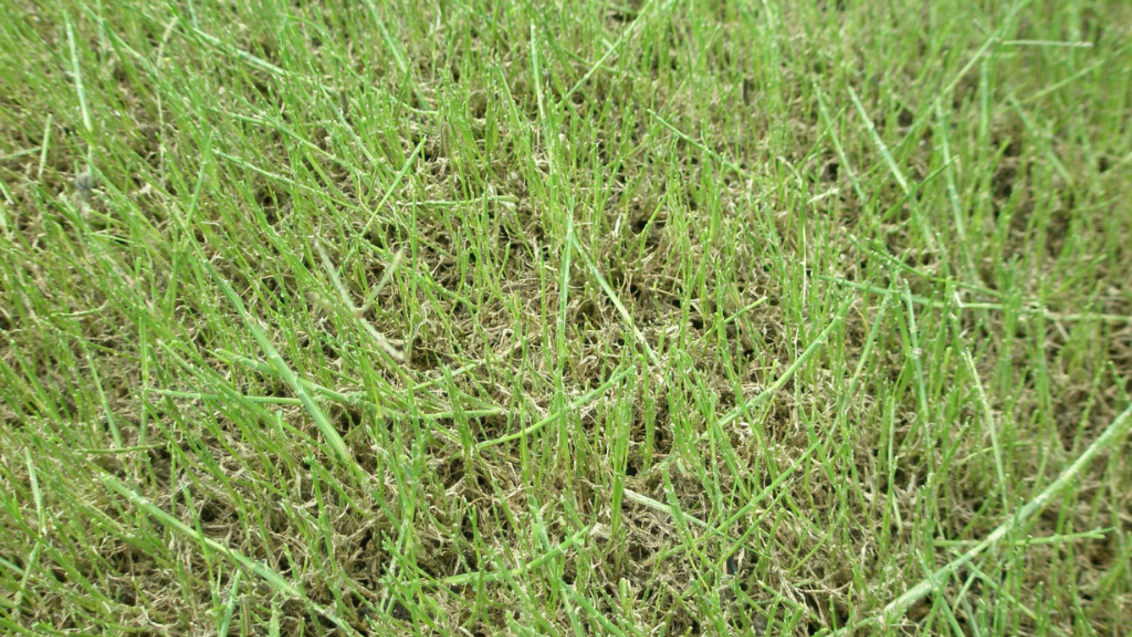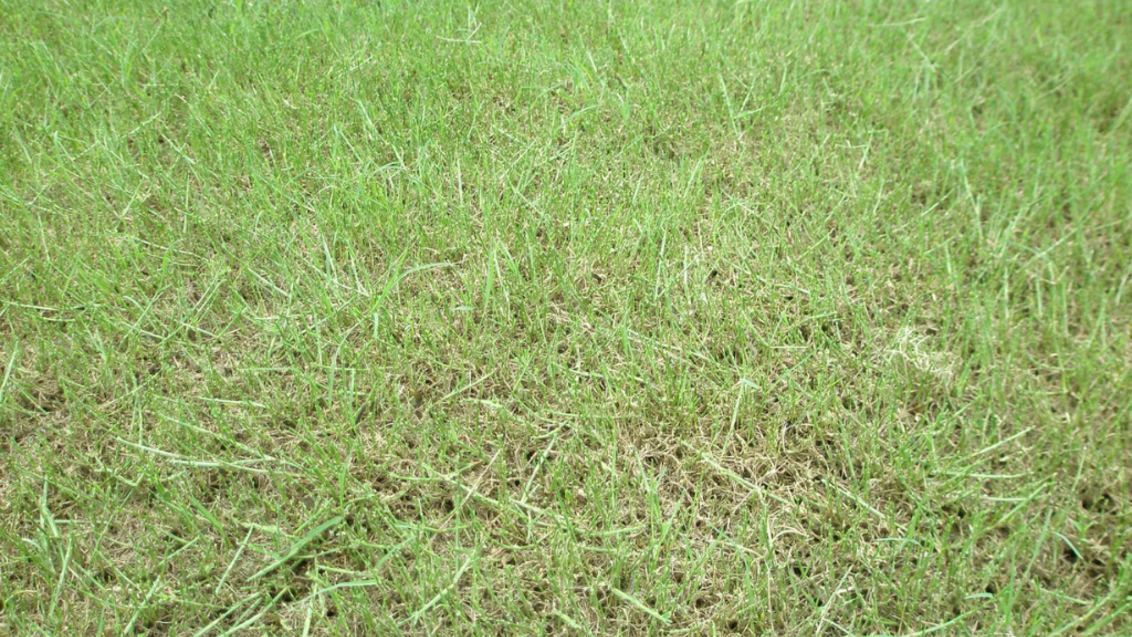Lawn Armyworm
Insect Pest
Identification
Lawn Armyworm is a damaging pest when in the larval life stage. The larvae are a soft bodied caterpillar with a dark coloured body up to 45 mm long, they possess unique white and yellow striped patterns along the length of the back making them relatively easy to identify. When feeding the larvae often appear in congregations, clumping around stems and foliage of the turf plant. Once mature, the caterpillar metamorphoses into a pale brown moth with a wingspan to 40 mm, possessing a distinct white spot in the centre of the forewing.
Life Cycle
The female Lawn Armyworm moth may lay more than 1000 eggs, sporadically in clusters within 4 to 10 days, pending on temperature. The newly hatched armyworms stay together feeding on the same plant until it is devoured. The larvae of lawn armyworm are usually most active in the evening or at night, except in overcast weather conditions. During the day they hide under the safety of the lower grass leaves. An armyworm will undergo 6 to 9 instar stages before it is fully developed. This will take 21-35 days and at a mature instar stage the insect will reach 3-4 cm in length. When fully fed the armyworm will work its way into the soil profile where it pupates. 10-14 days later the moths emerge. There may be 2 or 3 generations of armyworm during the summer and autumn period.
Symptoms
Lawn Armyworms are a major pest during summer and autumn, causing severe damage to turf on bowling and golf surfaces where they attack leaves, stems and seedheads. Infestations in turf gradually extend outwards from gardens or higher cut turf areas as these plants are used as egg laying sites. Severe damage is predominantly caused by the later instar stages and as populations increase, the larger armyworms tend to move in groups into unaffected turf areas, hence the name ‘armyworm’.
Considerations
Maintain constant plant growth during pest pressure can assist in recovery and reduce symptoms. Ensure adequate soil moisture and nitrogen is present.




